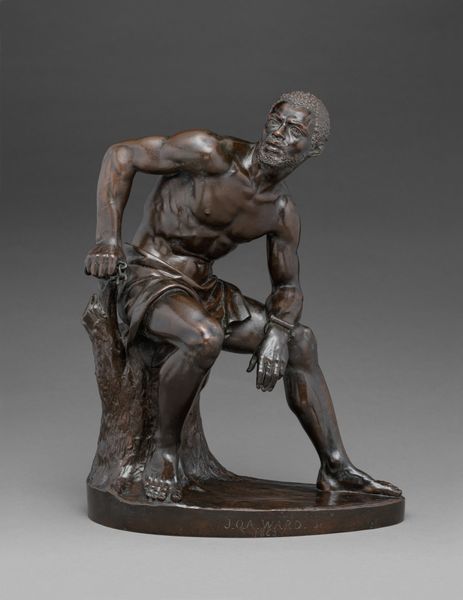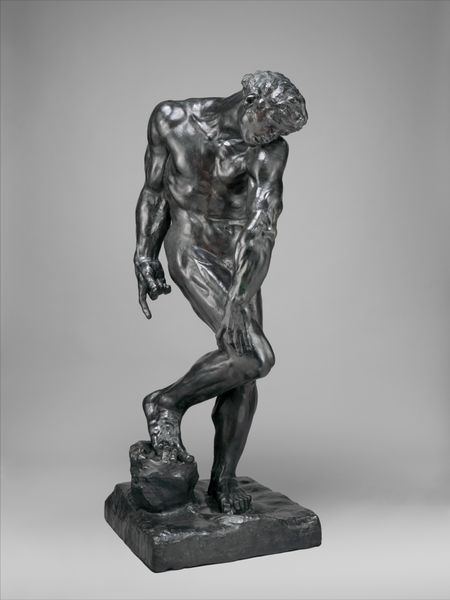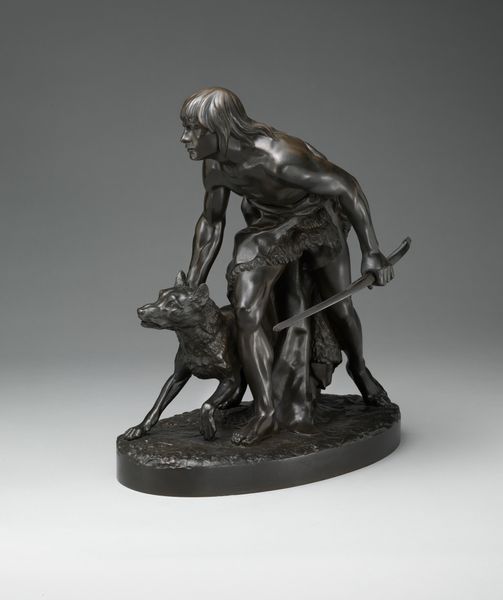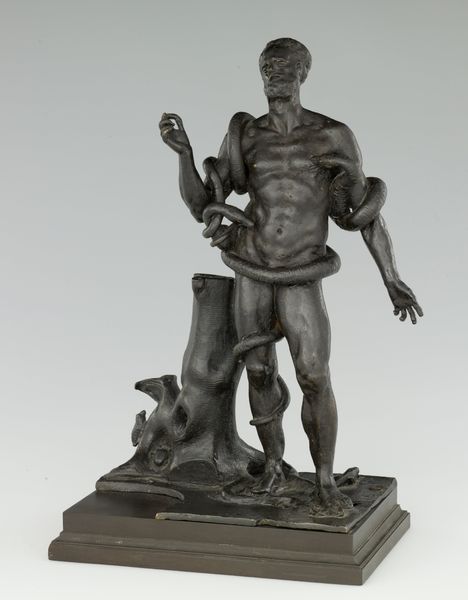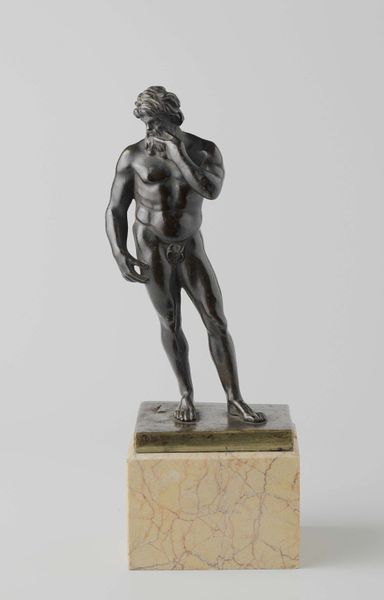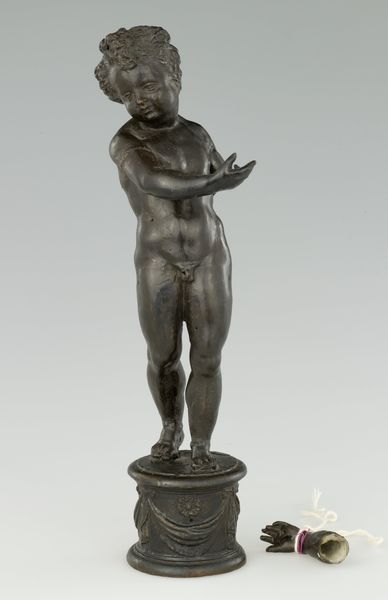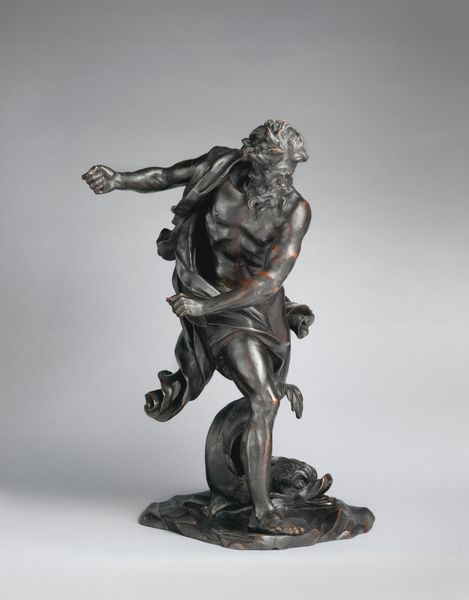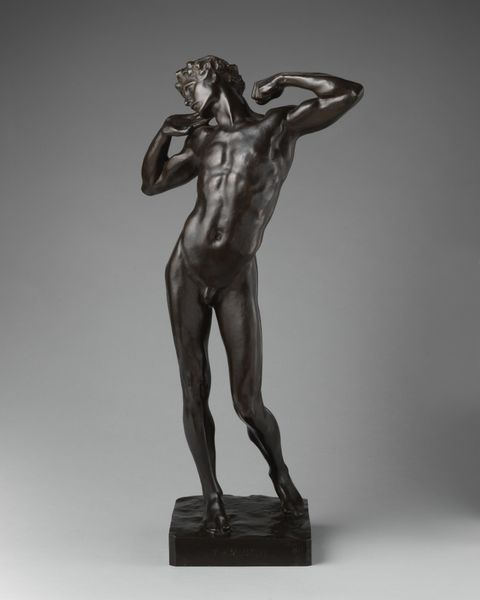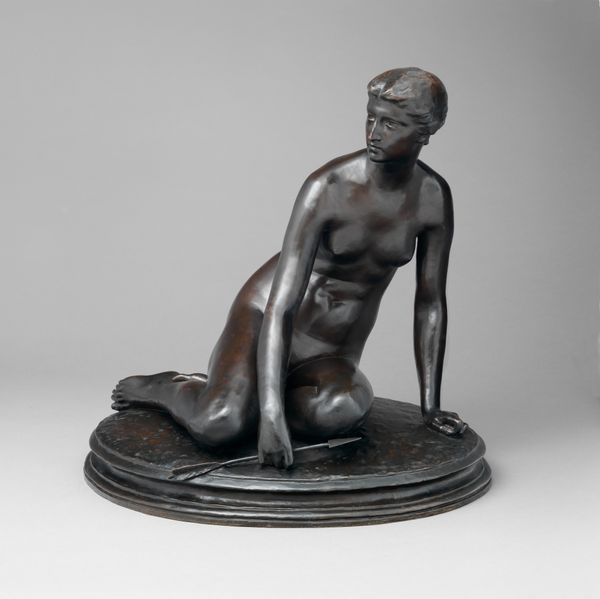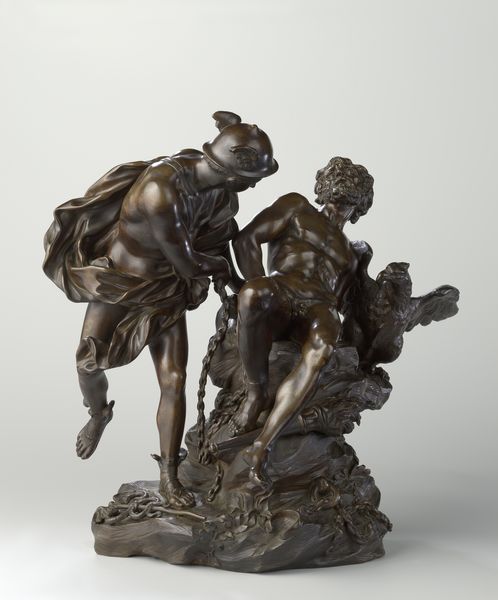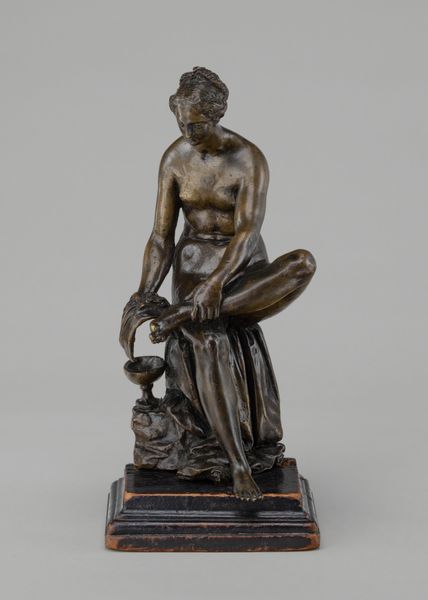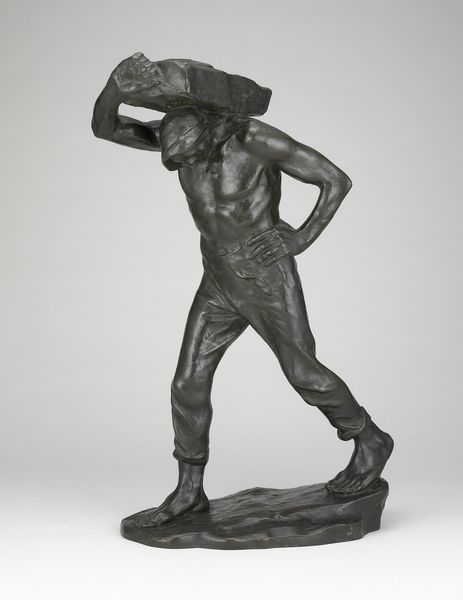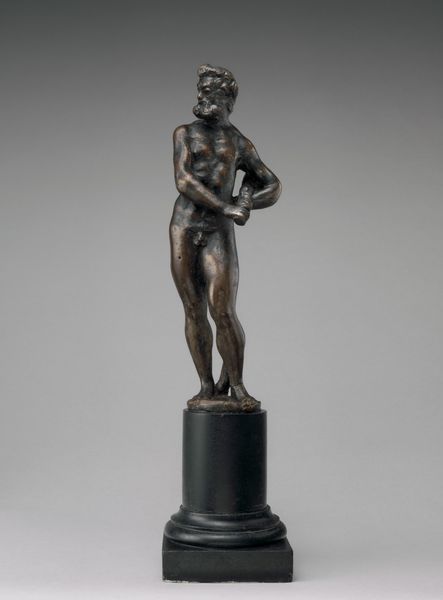
bronze, sculpture
#
portrait
#
african-art
#
narrative-art
#
sculpture
#
bronze
#
figuration
#
sculpture
#
men
#
united-states
#
history-painting
#
realism
Dimensions: 49.9 × 40 × 23.9 cm (19 5/8 × 15 3/4 × 9 3/8 in.)
Copyright: Public Domain
Curator: What strikes you first about this piece, knowing that it's John Quincy Adams Ward's bronze sculpture, "The Freedman," created around 1862-1863? Editor: Honestly? Melancholy. It’s there in the slope of his shoulders, the downward gaze. Despite being freed from literal chains, there's a profound sense of… what? Burden? Weariness? The sculpture invites me into a quiet space of reflection, and maybe even shared grief. Curator: Grief, perhaps, yes, but also resilience. Ward chose to depict the figure seated on what appears to be a tree stump, and notably, the broken shackles are still attached to his wrist, although they've been forced open. Consider the visual symbolism here; we're presented with realism that transcends literal representation. The texture and anatomical detail call back classical ideals even while charting a brand new narrative for American sculpture. Editor: Ah, that seated pose. I was thinking how it mirrors those classical depictions of seated philosophers. So is Ward placing this man—a formerly enslaved person—within that lineage of thinkers, of intellectual figures? But yes, you are so right. Note the positioning and rendering of the broken chains still hanging from his left wrist; there's liberation mixed with painful recent past, which evokes both an end, and new beginnings, right? And consider his gaze—he is both looking at the broken shackle, and away into the unknown. Curator: Exactly! Ward is playing with so much. This was created during the Civil War, and displayed at a time of immense social and political upheaval. It serves as both a historical record and a powerful commentary. But it also avoids sentimentality; Ward grounds it in the reality of the figure's lived experience, and the work challenges viewers to grapple with the complexities of freedom. I wonder, for what end do you think Ward sculpted this, as an American and witness of the realities that it invokes? Editor: I think Ward, was attempting a new American sculpture, a new realism steeped in complex emotional narrative that forces confrontation. Perhaps he envisioned this piece as more than a commentary on freedom. It seems to call out a past that continues into the present, both inviting, and confronting. What do you take away as the lasting impression of this sculpture? Curator: It’s Ward's sensitive portrayal that stays with me—the tension between physical strength and the deep introspection reflected in his posture and averted eyes. It's a powerful testament to the human spirit navigating the path from bondage towards an uncertain future, one wrought with challenges still present today.
Comments
No comments
Be the first to comment and join the conversation on the ultimate creative platform.
